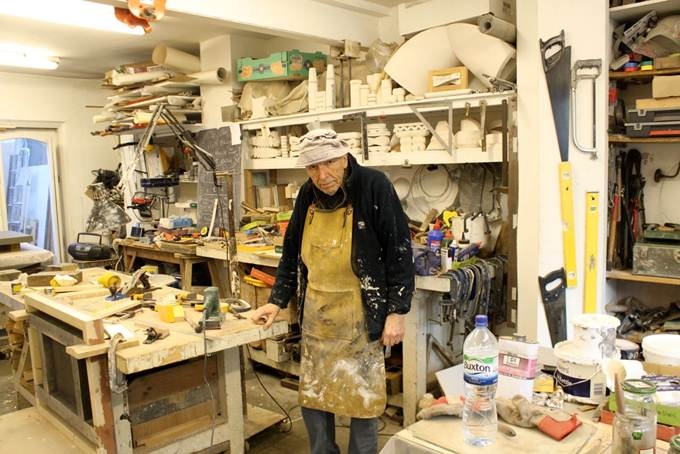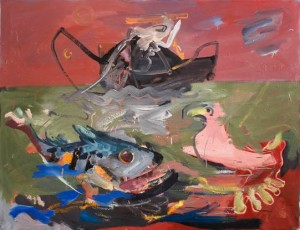
Paul de Monchaux in his studio
Wednesday 13th February – Friday 15th March 2013 The Piper Gallery, 18 Newman Street, London W1T 1PE
‘Leaving a trace’ or creating a ‘landmark’ is how Paul de Monchaux defines his aspiration for sculptural mnemonics. To wander among his elegant, enigmatic sculptures is to be enveloped in the artist’s own contemplative stillness of a mysterious and mesmerising landscape.
This exhibition at The Piper Gallery is in itself a landmark. De Monchaux has been celebrated for his major public commissions during a lifetime’s commitment to sculpture, yet this is his first exhibition in a private gallery. The works included are the results of de Monchaux’s creative endeavours from 1986 when he retired from teaching as Head of Sculpture at Camberwell. Smooth, refined forms have replaced the rough-hewn, largely figurative sculptures, which typified his earlier work.
De Monchaux regards himself as a ‘figurative sculptor’, responding to ‘things’ rather than concepts or ideas with visual references that are often submerged or refined beyond recognition. His works remain intriguingly elusive making us feel that the object is never completely disclosed.
Here, we are invited to travel through de Monchaux’s own ‘sculpture city’. Uxmal, for example, testifies to the cross-fertilisation of the sculptor’s work with its wide-ranging geographies and cultural references. Uxmal is the name of an ancient Mayan city; it recalls the Mesoamerican Pyramid of the Magician. De Monchaux presents a sealed vessel whose stepped motif creates a rhythmic motion that plays on the external surface and invokes the mysterious internal volumes of the pyramid, simultaneously inviting and refusing entrance. Uxmal resonates with the timbre of a miniature temple and explores the sense of the monumental within the miniature which characterises de Monchaux’s small-scale works.
Fixing Memory gestures towards our desire to create something permanent that will withstand the flux of time. If there is something inherently elegiac about de Monchaux’s need to ‘leave a trace’ then it is complemented by his profoundly optimistic belief in art’s ability to achieve this. He perceives that ‘those things that have power are the things that we remember’ and it is in this way that his work attempts to lodge itself in the mind of the viewer. As with his public work, the viewer is invited to draw power from the quiet gravitas of these sculptures and is compelled to return in silent communion.
Gallery founder and director Megan Piper says,
‘Excitingly, this is de Monchaux’s first solo exhibition at a commercial gallery. In 1986, once freed from the demands of teaching, the style of de Monchaux’s work shifted – apparently liberated, his works adopted an elegance and coherence with repeated forms that resonate and allow viewers to respond to the works in an individual way.’
About The Artist
Paul de Monchaux was born in Montreal in 1934 and studied at the Art Students League, New York (1952-1954) and at the Slade School of Fine Art (1955-1958). After teaching at Goldsmiths’ College (1960-1965), he went on to become Head of Sculpture and Fine Art at Camberwell School of Art. In 1986, de Monchaux retired from teaching to focus on his own work.
At the core of de Monchaux’s work is the belief that ‘formal invention alone can generate emotional responses that have no names, perhaps the most enduring and powerful kind’. The dexterity with which de Monchaux moves from one form to another, and his success in articulating and engaging with both his medium and his audience, has resulted in him being awarded many public commissions. These include Oozells Square, Birmingham (1998); Song – the BBC Churchill Memorial (2005); Silence, Jersey (2007); Breath, Norwich Memorial Gardens (2011) which is a companion piece to Sir Edwin Lutyens’ war memorial; and Girton Column, Girton College, Cambridge (2012). Paul de Monchaux currently lives and works in London. The Piper Gallery is the first commercial gallery to represent him.




